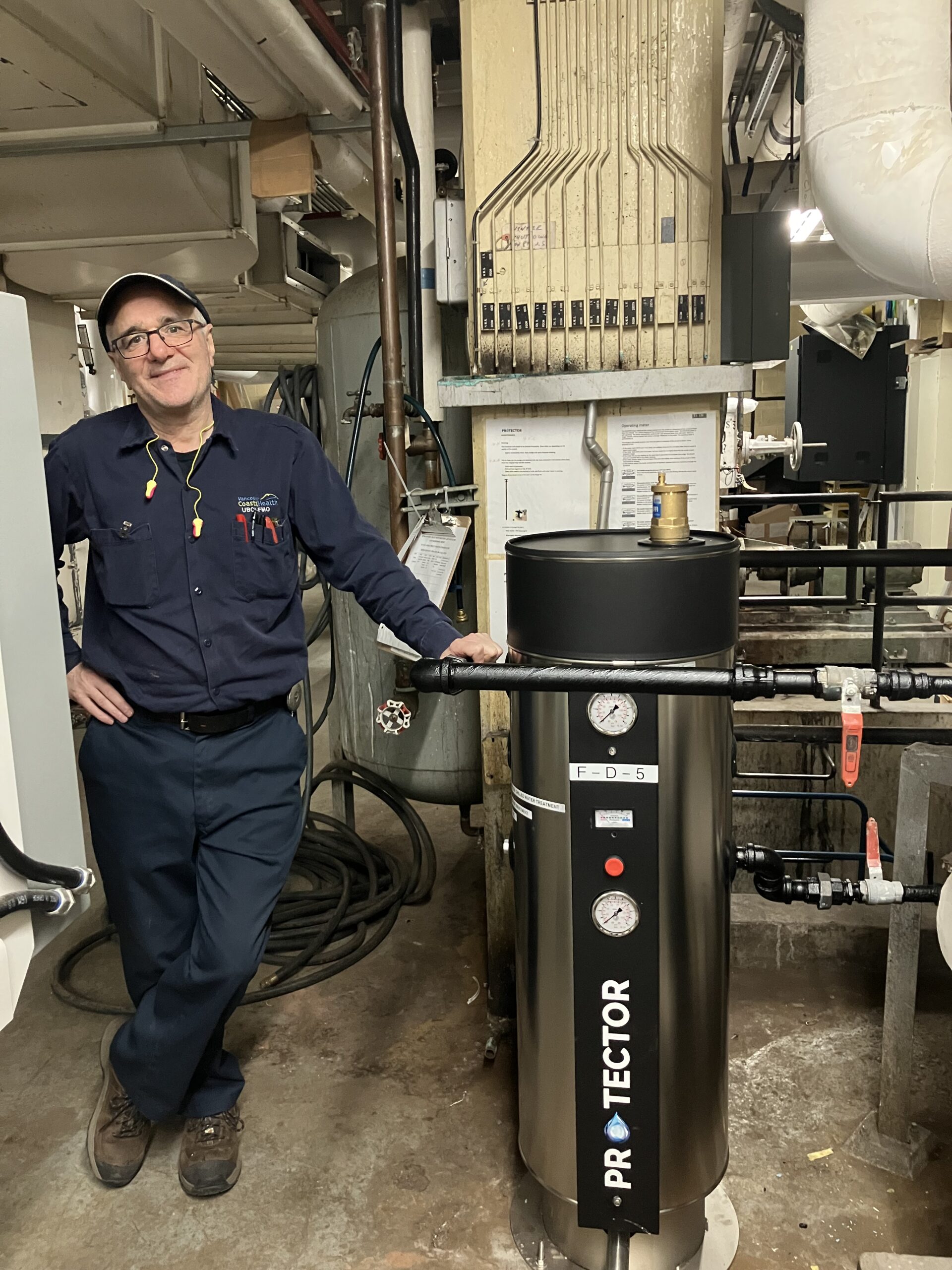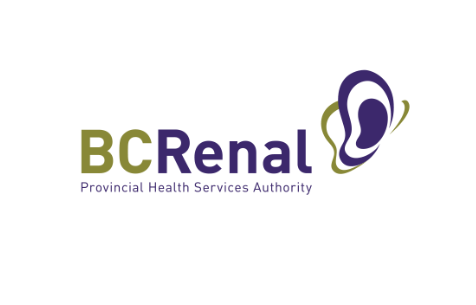UBC Hospital’s water treatment innovation saves more than just water
In the impeccably organized office of Mohammad Tayebi, chief engineer at the University of British Columbia (UBC) Hospital, a massive binder lays open on his desk. Mohammad flips through its pages, each one a testament to nearly four decades of service at the site. He knows every component, pipe and valve. Mohammad’s meticulous care and vast knowledge of UBC Hospital has supported countless steps toward more environmentally sustainable operations, including eliminating the need for adding chemicals to the water used in the maintenance of its equipment.
“For equipment to be kept in good operating order, it needs to be protected from corrosion and from scale deposits that may clog pipes,” Mohammad explains.
Managing these issues can involve adding chemicals into the water, such as corrosion inhibitors, oxygen scavengers and scale pro. When doing annual maintenance and any repairs, the boilers must be emptied. Using this method means discharging up to 4,000 litres of chemically treated water from each boiler annually.
Protector tanks are a non-chemical water treatment technology. They employ hospital-grade magnesium anodes which prevent corrosion and scale buildup in hot water boilers and chillers by removing sludge, particles, oxygen and other elements. This technology has been used by the marine industry for ship operations but is fairly new to the health care sector and is proving to be a practical choice for the sustainability benefits and efficiencies it offers.
In 2017, 11 Protector tanks were installed at UBC Hospital. At first, Mohammad and his team of 30 dedicated maintenance staff took on implementing the new tanks with some trepidation. Introducing a technology relatively new to health care felt risky, but the payoff was immediate. Bi-monthly testing for indicators of scale buildup has consistently shown results well below standard limits.
The closed loop systems are working very well. Since 2017, there are no chemicals in the water, no corrosion on pipes and no scale buildup,” reports Mohammad.
The cost savings are equally compelling, with an expected return on investment of about five years and an overall lower operational cost thereafter.
In 2023, Mohammad and Mario Ramirez, UBC Hospital facilities maintenance and operations manager, reached out to the Energy and Environmental Sustainability team to make the case for additional Protector units to reduce water and chemical consumption. In 2024, the hospital added eight additional Protector tanks.
There are still challenges to be overcome, including improving water treatment in open loop systems such as steam boilers. Mohammad and team continue to search for innovative solutions to manage performance across all the water and steam systems at UBC Hospital.
Facilities management can play a key role in driving environmental stewardship within health care. Targeted changes, led by dedicated professionals like Mohammad and his team, can ripple through the sector, aligning industry practices and patient care with sustainability goals. By daring to embrace a new-to-health care technology, UBC Hospital improved its operational efficiency and environmental safety standards. It’s the flow of initiatives like these that are turning the tide towards a healthier planet.








